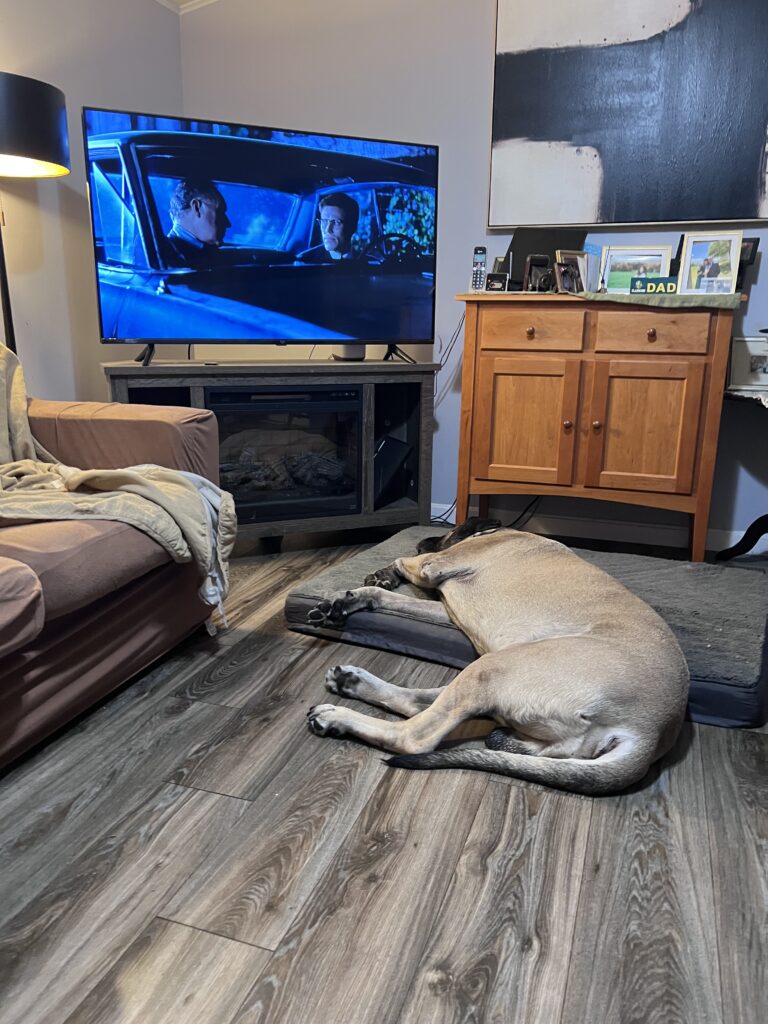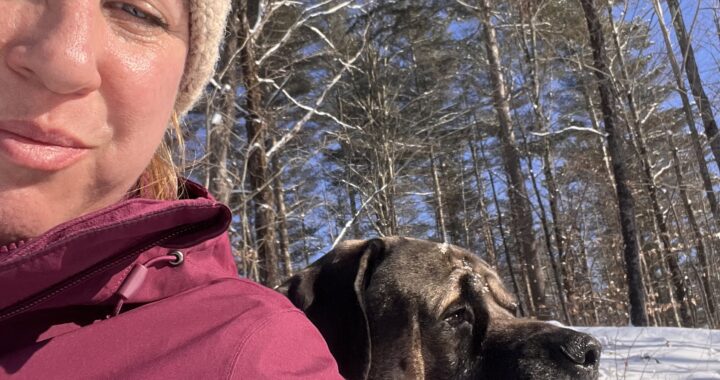When people picture livestock guardians, they often think of massive pastures, herds of sheep, and sprawling western ranches. What they don’t always realize is that a big dog can be just as valuable — maybe even more so — on a small homestead.
Every morning, before I even head out to the rabbit barn, my day starts with Tito. He’s my mastiff, big and steady, the kind of dog who makes people pause when they see him. But to me, he’s not just a companion. He’s part of the homestead itself — and proof that even on a modest 2.5-acre property in Vermont, a big dog can be one of the best investments you make.
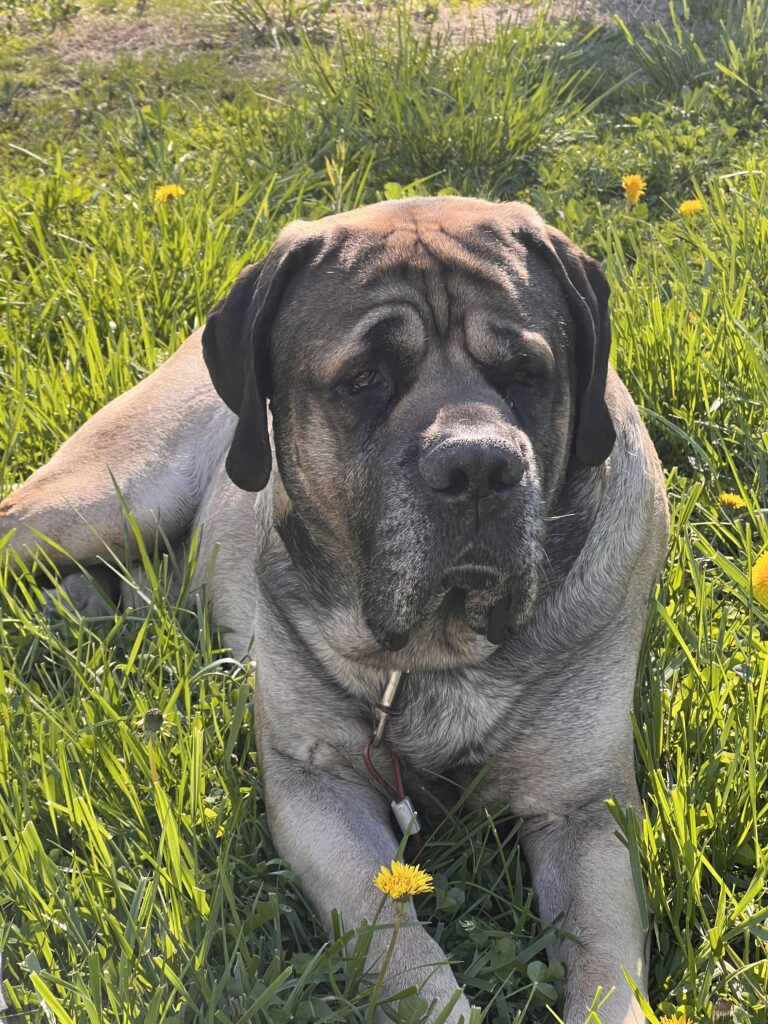
The Rhythm of Morning Chores
Tito is always the first one fed. He waits patiently while I scoop his food, tail thumping softly, eyes locked on me with that calm intensity only a mastiff can manage. Once he’s finished, he doesn’t wander off or demand play. Instead, he pads over to the door and settles himself down, waiting for me to get my coat and boots on.
He knows the order of things. I might still be half-asleep, fumbling with gloves, but Tito is steady and certain. He stays close, almost glued to my side, as if to remind me: don’t forget me — I’m part of this routine too. And I never do.
When we finally step out into the Vermont air — whether it’s the bite of January or the mist of June — Tito stays right there by my leg, walking me toward the rabbit barn. He doesn’t run ahead. He doesn’t lag behind. He’s present, patient, and ready. That presence sets the tone for everything that follows.
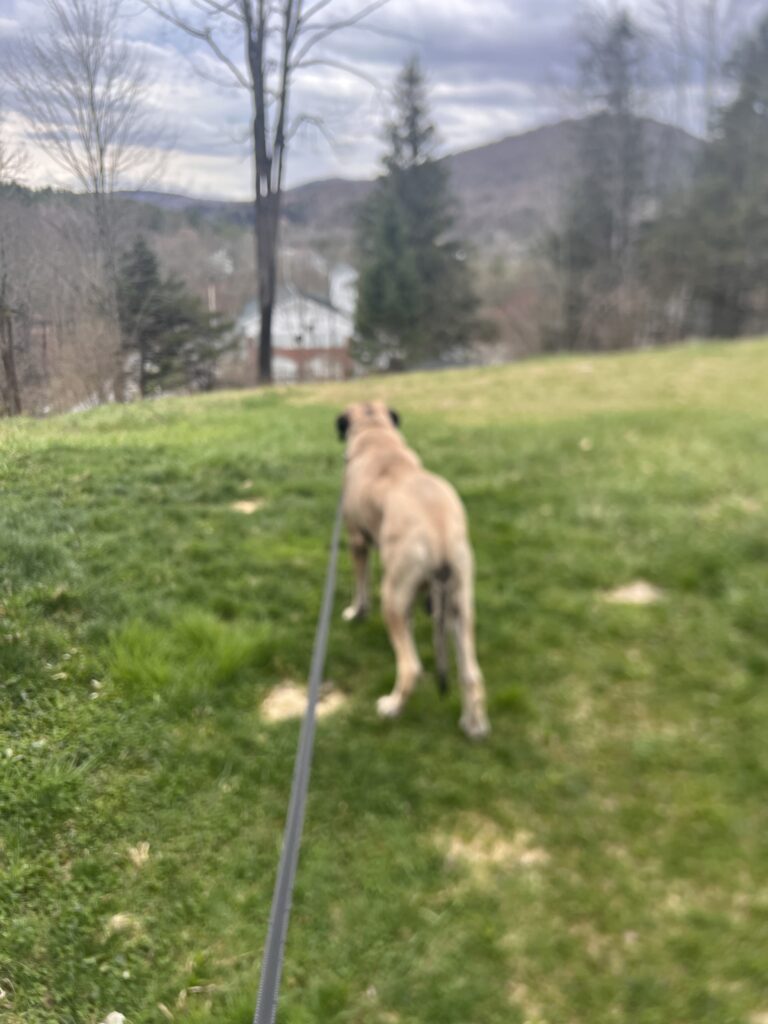
Why Big Dogs Belong on Small Homesteads
It might sound counterintuitive — why keep a giant dog on a modest property? But after living it, I’d argue the opposite: a small homestead is where a big dog shines.
1. Predator Presence
Rabbits, chickens, and gardens are a buffet for predators. Foxes, coyotes, raccoons — even the occasional bear in Vermont — all pass through. Tito doesn’t need to bark or chase. His sheer size, and the fact that he’s always with me, sends a silent message that this homestead is watched over.
2. Peace of Mind
Homesteading means you’re often outside before sunrise or after sunset. Having Tito close at my side, waiting while I move through chores, gives me a sense of safety that no lock or fence ever could.
3. Companionship
Chores can be lonely, especially in winter. With Tito beside me, it never feels like work done alone. His steady company makes even the coldest mornings easier.
The Challenges of Big Dogs on Small Homesteads
Of course, big dogs bring big responsibilities.
Food Costs: Tito eats more than my rabbitry combined. It’s something you have to budget for.
Space Needs: While he doesn’t need 37 acres, he does need exercise and structure. His daily walk after chores isn’t optional — it’s essential.
Training: A mastiff of his size must be calm and reliable. Teaching him to stay close, respect the rabbits, and wait for his turn took time and patience.
But those responsibilities come with rewards. On 2.5 acres, I can give him consistency, room to stretch, and a daily role that makes sense to him.
Tito’s Place in the Rabbitry
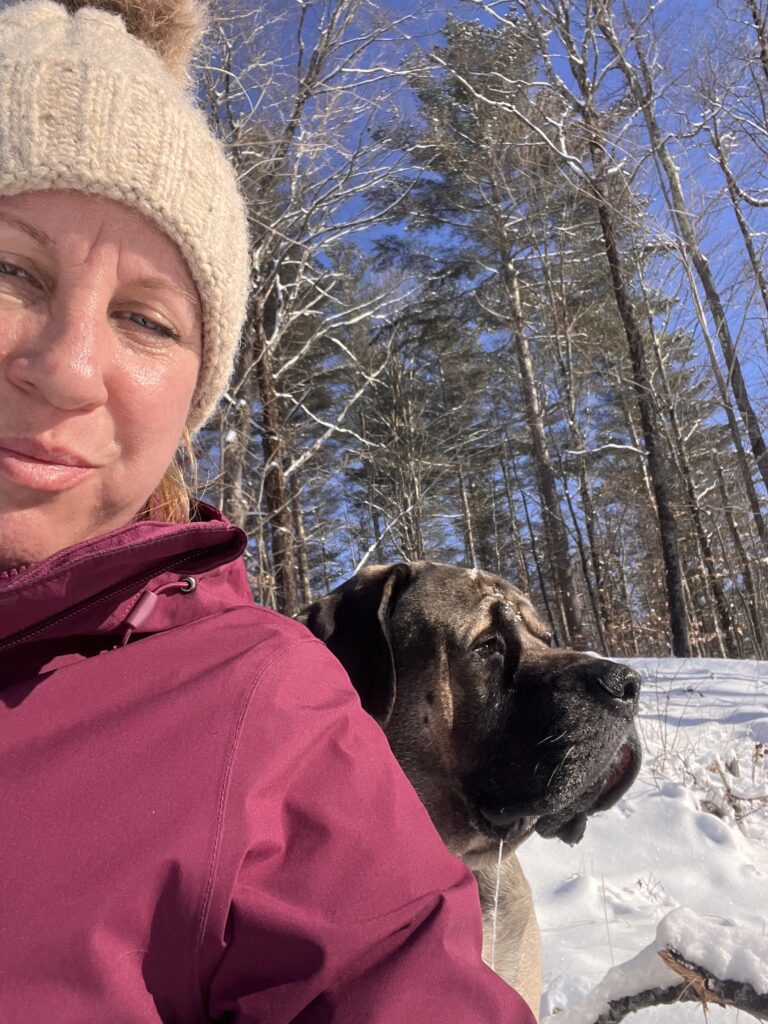
When people hear I raise rabbits, they sometimes ask if a mastiff and prey animals mix. The truth is, Tito fits in beautifully. He doesn’t loom or pace. He doesn’t nose the cages or stir up anxiety. Instead, he lies nearby or sits quietly, watching as I tend to the animals.
While I haul feed, scrub water crocks, or check nest boxes, he’s there — steady, calm, waiting for the moment we’ll head out together. If something stirs in the woods or a neighbor’s dog wanders too close, his ears perk up, but he never leaves my side.
His role isn’t about chasing intruders. It’s about being a presence. And in that presence, there’s comfort — for me and, I’d like to think, for the rabbits too.
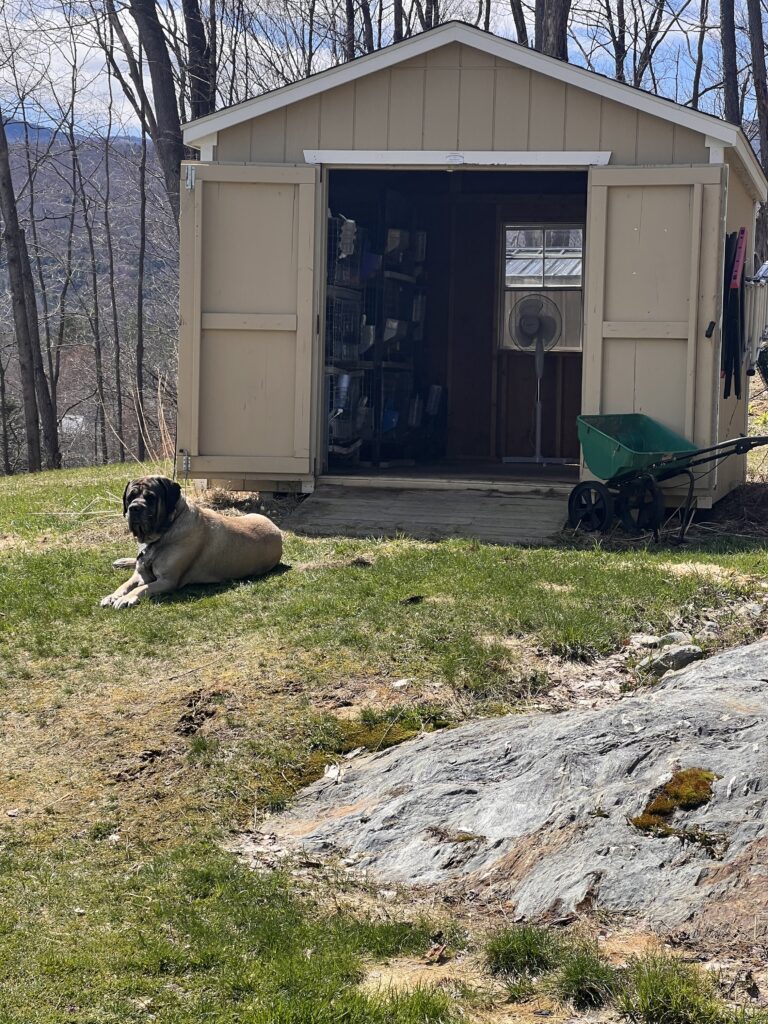
The Emotional Side of Big Dogs
There’s something grounding about starting every day with Tito. Homesteading can be exhausting. Some mornings, the cold feels endless, or the to-do list feels heavier than I can manage. But seeing him wait patiently, ready to walk me into the day, makes it easier.
He doesn’t hurry me. He doesn’t complain. He simply waits until I’m ready, then moves with me. That quiet loyalty does more than guard the homestead. It guards my spirit.
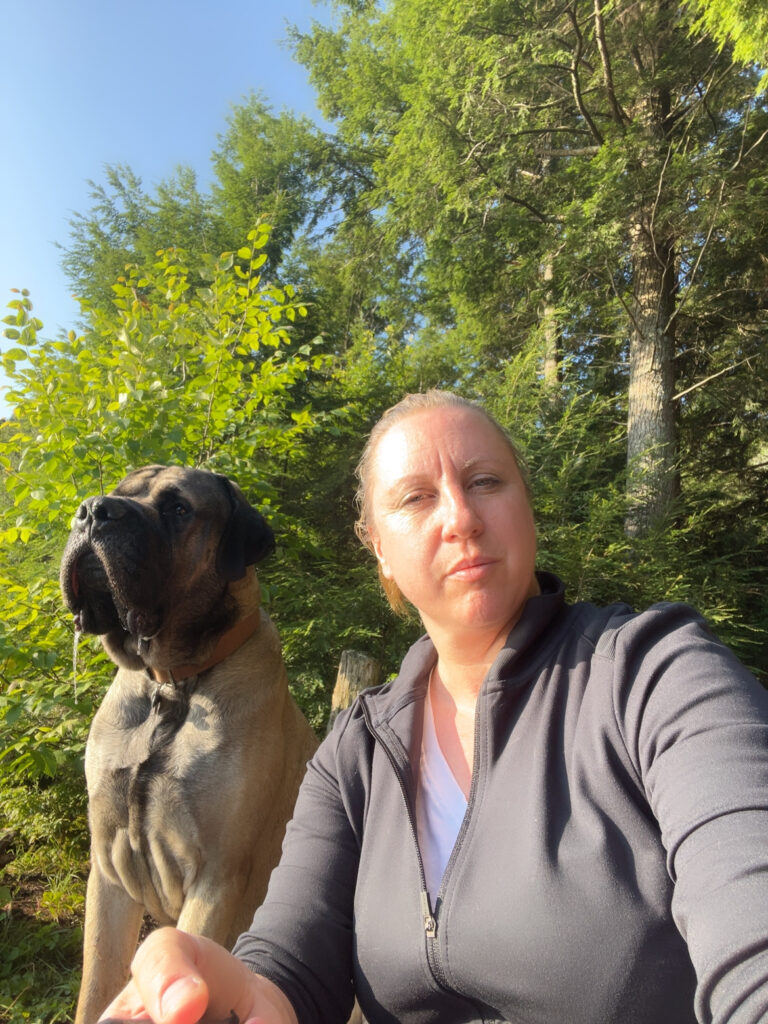
Advice for Homesteaders Considering a Big Dog
If you’re thinking about bringing a large guardian dog onto your property, here’s what I’ve learned:
Pick for temperament, not just size. Calm, steady breeds like mastiffs, Great Pyrenees, or Anatolians adapt best to homestead life.
Train for trust. An off-leash partnership takes time. Start early and be consistent.Budget honestly. Food and vet bills aren’t small, but the return is peace of mind and companionship.
Give them a place in the routine. Big dogs thrive when they know their role — even if it’s as simple as waiting through chores for their walk.
Closing Thoughts
Every morning, Tito reminds me of what homesteading is truly about. It’s not just the animals or the garden or the projects. It’s the rhythm of living close to the land, side by side with the creatures who make that life richer.
On my little 2.5-acre homestead, Tito is as much a part of that rhythm as the rabbits or the garden beds. He eats first, waits while I pull on my coat, stays close as I move through chores, and finally, when everything is done, he gets his walk — the highlight of his morning, and mine.
Big dogs don’t just belong on sprawling farms. They belong wherever they’re given purpose, love, and a place in the daily rhythm. For me, that place is right here in Vermont, with Tito at my side, reminding me every day that the best homestead partners aren’t always the ones you plan for. Sometimes, they’re the ones who wait patiently by the door, coat on or not, ready to walk with you into whatever the day holds.
